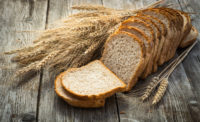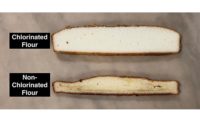Successfully baking clean label bread

Baking clean label bread introduces its fair share of challenges. However, with growing demand, it’s worth the challenge. And with an understanding of baking systems and a little help from new innovations, baking clean label bread has never been easier. Here are a few ways to succeed at this trend.
Sourdough.
Sourdough isn’t a new baking technique, but it has been making a comeback in popularity. Part of the reason is ease it gives to clean label baking. Sourdough systems are cleaner systems. They naturally have a simple ingredient list, and the long fermentation process helps fill in for dough conditioners and improvers. Also, the dough’s low pH limits mold growth, limiting the need for artificial preservatives.
Enzymes.
Enzymes are protein catalysts found naturally in biological sources and are denatured during the baking process. They offer a whole range of benefits to bread as well, including reduced mixing times, dough stability, increased oxidation and improved machinability. A few enzymes that work especially well in clean label baking are glucose oxidase, xylanase and phospholipase.
Replacing DATEM.
One of the more-difficult challenges of clean label baking has been replacing DATEM. However, a powerful solution on the market is made with L-cysteine derived from fermentation of non-GMO raw materials of vegetable origin. It performs similarly to DATEM and SSL in breads, and can be listed as “wheat protein isolate” on the label. It. Basically, the supplier has converted a protein into an emulsifier, naturally! And the end results are impressive.
Rapid Hydration Technology.
If you’re looking for more of a process-based approach to clean label, you should look into hydration technologies. Solutions exist that are based on continuous mixing to penetrate dry ingredients with a high-pressure of stream of liquid. The result is dough that’s hydrated and mixed in a matter of minutes, thereby controlling temperature. High-temperature doughs need more yeast and dough conditioners. This technology might eliminate the use of certain dough conditioners, resulting in a cleaner label. It will also improve the overall hydration, quality and shelf life of your product naturally. And it will save you time and money in the process.
Looking for a reprint of this article?
From high-res PDFs to custom plaques, order your copy today!








